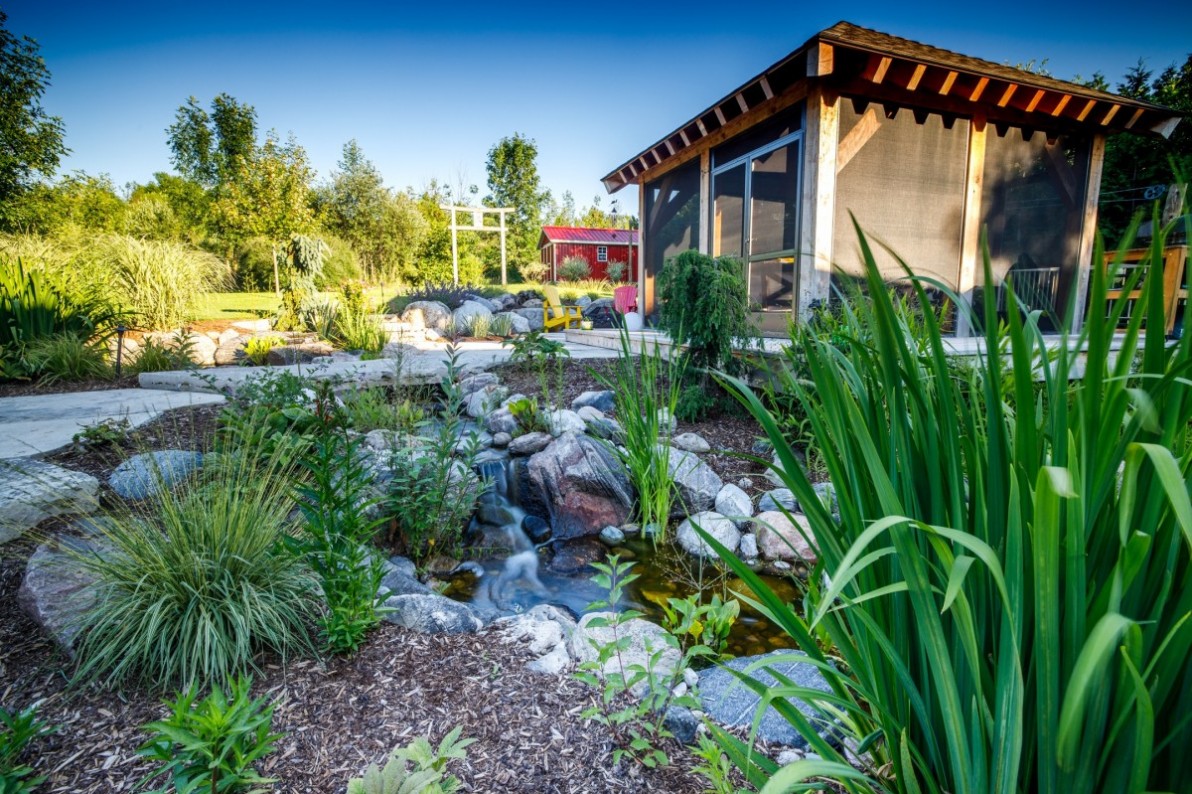Landscapers - Truths
Some Known Factual Statements About Landscapers
Table of ContentsRumored Buzz on LandscapersTop Guidelines Of LandscapersAll About LandscapersLandscapers Can Be Fun For AnyoneThe Definitive Guide for Landscapers
- A tree or shrub (shrub) that sheds its fallen leaves in winter months. In the PNW there are semi-deciduous or semi-evergreen plants that may shed their leaves depending upon just how chilly the winter months is. Abelia and some hebe are excellent instances. Landscapers. - A level gathering area, constructed from timber or composite material (made to look like timber), typically surrounding or affixed to a structure.

- Granite that is weathered to the factor that it is a really fine aggregate. This is an all-natural process, and the outcome can be utilized for paths and patio areas. Disintegrated granite is commonly described as DG. It is specifically beneficial in contemporary landscapes. - Secret landscape functions being recommended in a landscape style plan.
5 Easy Facts About Landscapers Explained
These objectives direct the style procedure, not the designer's style or choices. Common style purposes in Rose city are low maintenance, dry spell forgiving, and pet friendly. - Process for eliminating or thinning the dead reduced degree of a mature lawn. Thatch is turf that has actually passed away and collected below the eco-friendly blades.
Over time this layer can obtain really thick and make it tough for water, sun, and nutrients to get to parts of the grass.- The process of gathering and regulating the circulation of water on a residential or commercial property. This can be made with grading, French drains pipes, completely dry wells, absorptive surfaces, sump pump, rain gardens, and much more.
- A slow-moving feeding irrigation system that utilizes flexible tubes and emitters to send out an accurate amount of water to each plant. - The capacity of a plant to endure without much summertime water.
- A garden attribute where water is stood for by an aggregate stone product, typically a gravel or granite. These are most commonly located in contemporary and Japanese garden design.- A rock or flagstone patio, course, or walkway constructed without a concrete base. The base would certainly be compacted crushed rock and the joints would be an aggregate or walkable ground cover.
The Buzz on Landscapers
- A stone preserving or free standing wall surface developed without the use of mortar. - An underground framework that collect water and permits it to reduce percolate right into the dirt around it.
Landscape design that works with a sites' environment in both look and sustainability without adverse effects to the environment. Bordering in the landscape is a line of demarcation that produces aesthetic rate of interest in the garden by separating one sector from another sector. This can be aesthetic or useful, maintaining one aspect (such as pea gravel) from obtaining mixed into here another (like bark dust).
Locations can likewise have a feeling of "unit" offered by trees, other growings, fences, or displays. The landscape near the entrance to a structure. A tree, bush or vine, trained to expand on a wall or fencing into a specific pattern. Specifically helpful for fruit trees, making it easy to gather the fruit and containing mess.
A plant that is not native to the place where it will certainly be grown. Thicker bladed turf lawn that spread out via rhizomes.: The degree of dirt on your residential or commercial property prior to bark dirt or compost is spread.
A Biased View of Landscapers

The function, reason, or action that a location is be landscaped for. Staircases operate, as an example, to enable foot traffic up and down an incline. Area for growing plants for viewing, consuming, or physical task. A roofed building used over an outside event room. The sprouting of a seed, possibly referring to a grass that is being grown from seed.
Rock product, either rounded or fractured, that is relatively tiny- typically 1" or less. Reduced plants that are allowed or urged to top an area. Can describe any type of "difficult" yard aspects including statuary or rocks however most generally is utilized to refer to courses, patios, and walls.: Elevation difference in between the level of water in a fish pond (or the level of the pump if it rests outside the pond) and the top outlet of water which influences performance of the water pump in gph (gallons per hour). Thick shrubs or trees that create a fence, display, or boundary.

What Does Landscapers Do?
An even more kicked back yard dominated by curved rather than straight bed lines and a less inflexible framework. Standard PNW landscapes are informal. A plant that spreads more than wanted, or right into environments where it does damage. Portland has a checklist of intrusive plants that ought to not be installed in landscapes because they can infect forests or waterways and be challenging to control.
Smart irrigation controller evaluations and suggestions below. 2-D making of the suggested irrigation system. Can include head placements and coverage, pipeline sizing, GPM specifications, and products needed to install this system. An irrigation plan is usually click for more info unneeded for property homes however prevails for commercial tasks. Licensed specialist that makes landscapes, educated in engineering and style as well as in horticulture.
The professional that intends and establishes landscape projects, usually at a household or small industrial level with the major style incentive on growings. Landscape designers normally have less education than Landscape Architects and are not licensed. A completed landscape style, describing all elements for the brand-new landscape. This usually takes the form of a drawing on paper.
Calcium product used to increase the pH in dirt, which will make it much less congenial to moss. A water limited HDPE material utilized beneath fish ponds, streams and waterfalls in water features. Utilizing several plantings of the same range to fill out a location in the landscape. This can reduce maintenance and water usage in the garden.